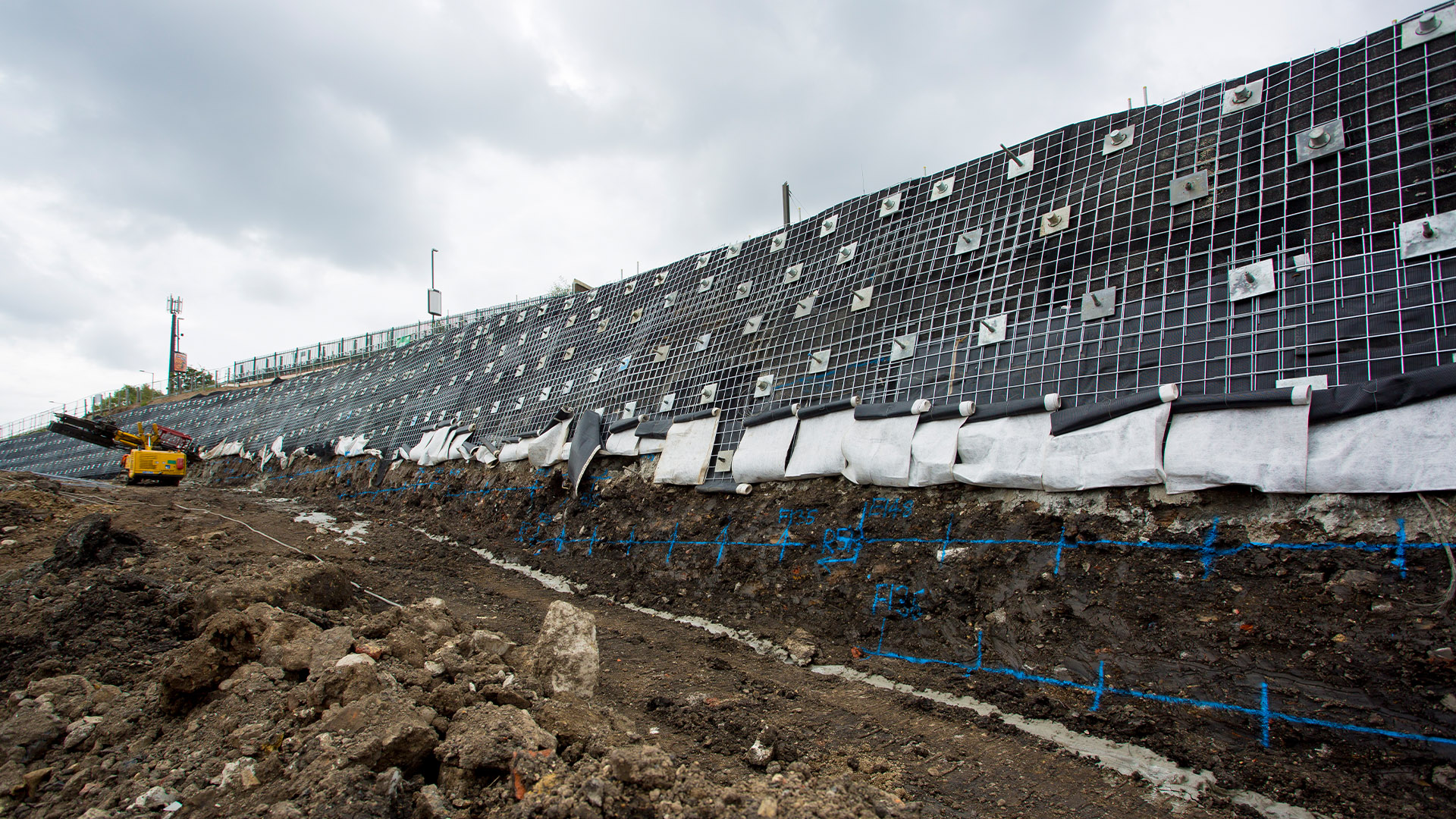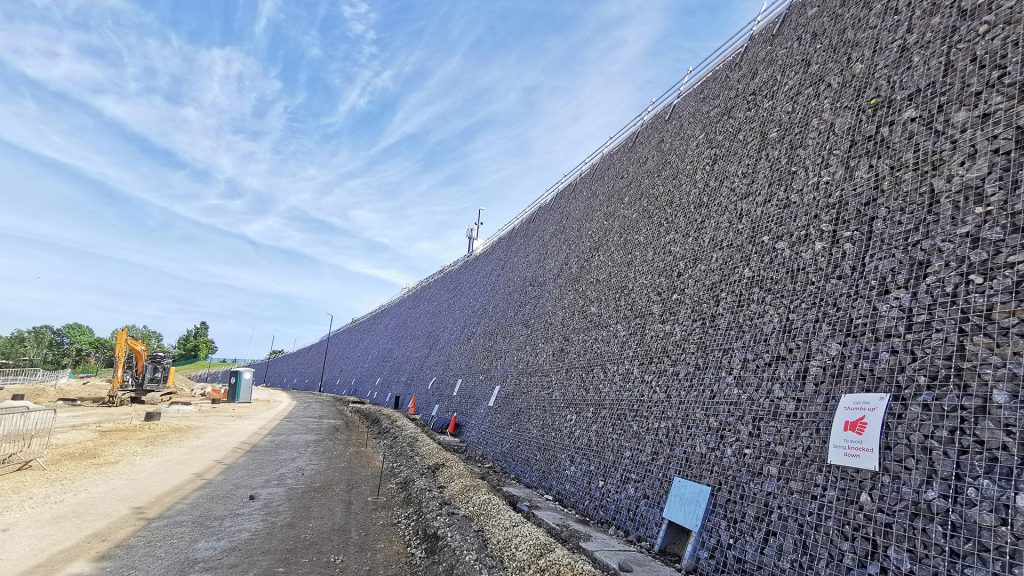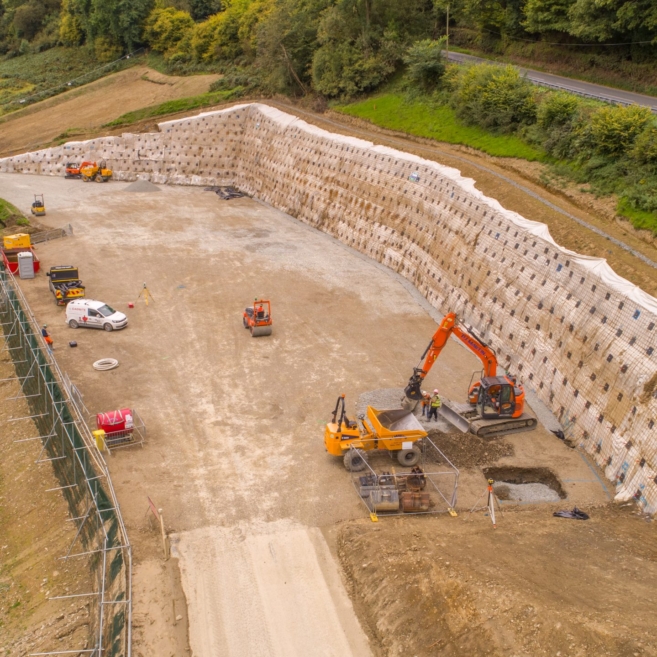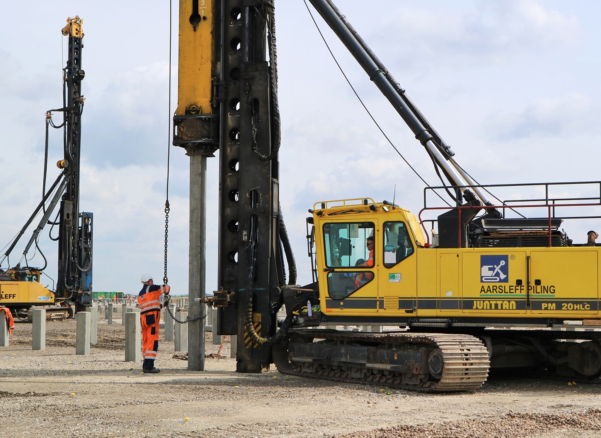Answering Five Key Questions about Soil Nails

Soil nails are a cost-effective method for long or short-term stabilisation of steep existing or proposed slopes, designed and delivered by Aarsleff Ground Engineering across the UK. We’ve answered five of the most commonly asked questions about soil nailing below.
What is soil nailing?
Soil Nailing is a technique used for retaining walls and other projects, as a way of reinforcing the soil. Soil nailing can be used as a solution for both permanent and temporary retaining walls. As part of soil nailing, the slope or wall which is required to be stabilised first needs to be predrilled. Long steel rods are then put in place and grouted in to hold the soil in place. If the soil contains corrosive elements, then the steel rods need to be coated in anti-corrosives to protect them. To give the soil optimum stability, a covering later fixes the rods in place.
How long do soil nails last?
Soil nails are a durable solution, with an expected minimum lifespan of 100 years. This is an advantage of the solution, as anchoring and retaining wall alternatives may have similar lifespans, but will require more maintenance and repair.
What are the advantages of soil nailing?
- It is ideal when working on sites which have a limited amount of space, as there is little need of room to manoeuvre.
- Soil nailing can follow irregular and tight corners, as well as providing stability to the wall from the top to the bottom. This means that the soil can be secured whilst workers continue to dig down deeper.
- It is a rapid and economical method
- Grouting is only required once
- Soil nails are not prestressed
Where might you use soil nails?
Soil nails are beneficial for a range of applications such as temporary and permanent retaining wall construction, erosion control, landslip prevention, roadway cuts, and bridge abutments. From 2019 to 2021, we installed the UK’s longest soil nail wall as part of the Sunderland Strategic Transport Corridor project – discover more.


How much do soil nails cost?
A budget plan for pricing soil nailing work would include preparatory work, drainage system, soil nailing, and shotcrete (facing).
A cost estimation for soil nailing considers the four variables:
- Length
- Horizontal distance
- Safety factor (SF)
- Time
Conclusion
By analysing the required work, a method for calculating the unit price for the construction can be done. This includes the cost for the materials needed, the labour of installation, and the equipment used to complete the soil nail construction works.
The Latest. News, podcasts & projects








